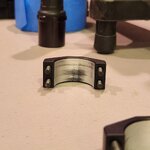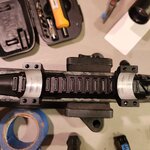CampSmith
FNG
- Joined
- Feb 8, 2024
- Messages
- 81
Ok hate to beat a dead horse but I think what I found could be useful to others here. This topic has been argued over on here in numerous posts. Some guys for but most guys against lapping scope rings. Most on here, me included, will say it's definitely not necessary if you buy high end rings. Well Iets just say I agreed with that for years until yesterday. I've never lapped a set of rings. I've mounted more scopes over the years than I can remember. My own, family, friends etc. I've always either used or recommended high end rings and explained the benefits of using them as opposed to using crap. Well I recently purchased a Seekins Precision Havak Element and went with a Leica Amplus 6 3-18x44i 4w to top it off with. I also picked up a set of Seekins 30 mm rings. Before mounting the scope I borrowed my buddies lapping kit for shits and giggles lol. Just to check my "high end rings" I mounted the bottom have of the rings on the rail and torqued them to spec. I then put one of the 30 mm alignment bars on each ring. Guess what? They didn't align perfectly like I thought they would and one of the alignment bars didn't sit flat in the rear ring. I could rock it slightly back and forth. I then chalked the lapping bar put it in the rings installed the caps and tightened them. When I removed the bar that rear ring had only about 30% contact. More contact in the front ring but still less than I ever would've thought. So after all these years I learned something new. I'll never install any set of rings without first checking ever again.


